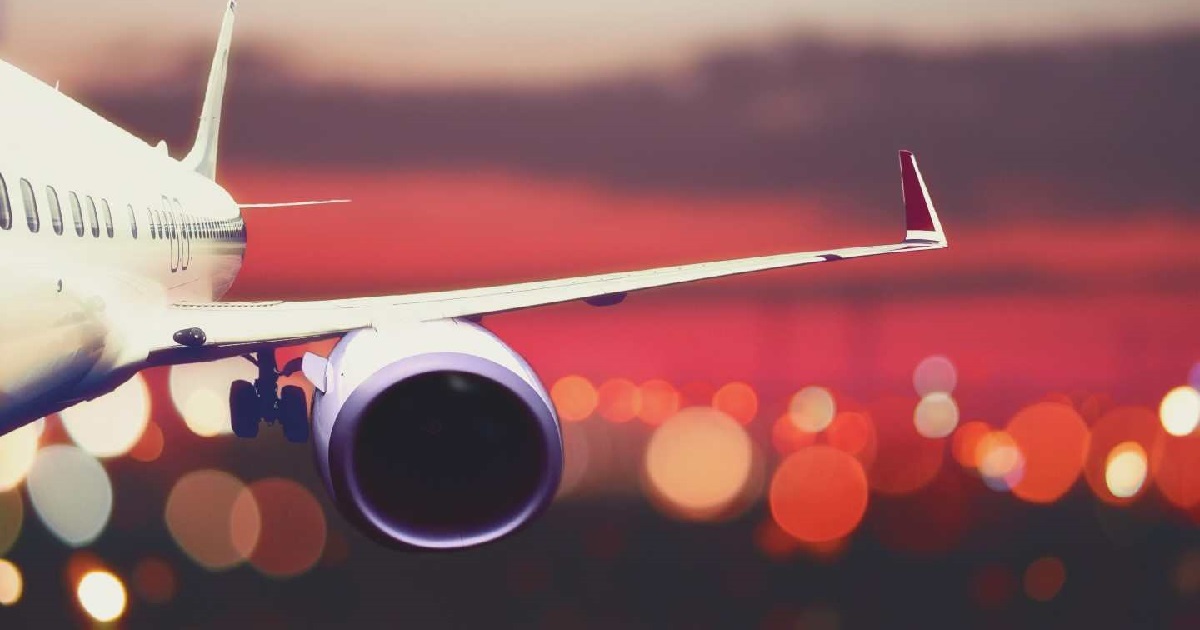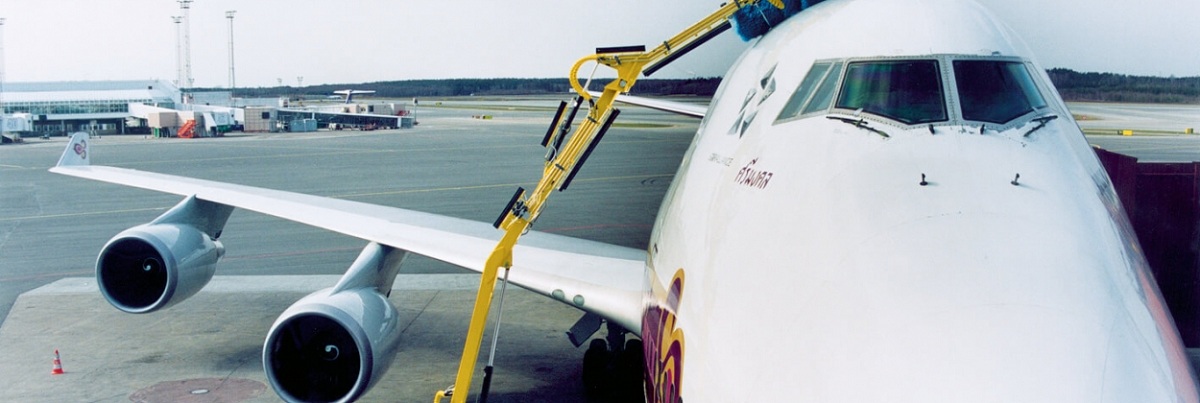
Business Aviation
Article | December 28, 2021
NASA is known for developing and launching spacecraft that have a significant environmental impact. However, the space agency is fully on board with the net-zero movement. NASA supports the White House's Aviation Climate Action Plan. It is helping fund several aviation projects that aim to reduce the aviation industry’s damage to the environment.
NASA’s Sustainable Flight Demonstrator Program
NASA focuses on technologies for single-aisle aircraft, which are the powerhouses of many airline fleets and account for nearly half of global aviation emissions. NASA's Sustainable Flight Demonstrator (SFD) project aims to reduce carbon emissions and keep the US competitive in the design of single-aisle commercial airliners, which are in high demand.
"Since its creation, NASA has worked with industry to develop and implement innovative aeronautics technology and has shared it with the world," said NASA Administrator Bill Nelson. "Now, with this ambitious new project, we're again joining with US industry to usher in a new era of cutting-edge improvements that will make the global aviation industry cleaner, quieter, and more sustainable."
NASA Wants to Reduce the Environmental Impact of Commercial Aircraft
The program’s goal is to build, test, and fly a large-scale demonstrator. NASA hopes to find a business partner for a Funded Space Act Agreement with its Armstrong Flight Research Center in Edwards, California, by the beginning of 2023.
The agreement would draw on private-industry knowledge and experience, with an awardee developing a suggested technical plan and committing considerable cash to the project. Under this agreement, NASA would not purchase an aircraft or any other hardware for its missions. The mission of NASA is to develop new and innovative technologies and capabilities.
NASA will collect data on the ground and in the air. Agency and industry teams can use it to test the airframe configuration and related technologies.
Moving Away From Space
NASA's technologies are typically cutting-edge. However, as with many high-end items, the benefits and applications frequently filter down to the masses. NASA's specialized technology and research frequently has civil aviation applications. It's interesting to see how NASA seems to be moving away from space and going after planes that fly closer to Earth.
Read More

Air Transport
Article | July 15, 2022
The UK government has announced that from 11th February, fully vaccinated passengers arriving into the country will no longer have to take COVID-19 tests on arrival. The news follows the removal of pre-departure testing for fully vaccinated UK-bound passengers this month.
The relaxation of testing measures is something the aviation industry has been actively campaigning for, as it removes barriers to travel. Just today, IATA distributed a press release advocating for similar moves to be made by further governments. It cited a study focused on the UK carried out by Oxera and Edge Health which found that because Omicron is now highly prevalent in the UK, “if all travel testing requirements were removed there would be no impact on Omicron case numbers or hospitalizations.”
Read More

Business Aviation
Article | January 7, 2022
Drones may be troublesome at some points in the supply chain. It can cause many hurdles and safety hazards. But what about the vast potential that drones carry to assist and even improve safety?
The topic of discussion in this blog revolves around drones in the supply chain. Are these advantageous or troublesome? The blog showcases both sides of the coin.
According to the global commercial drone market’s study, drones are expected to witness growth of 26%. It is going to reach a value of $10,738m by 2022. Aren’t these figures impressive?
While the pandemic has forced industries and businesses to increase touch-less mechanisms, the increasing demand for contactless deliveries has given drones a wide-ranging opportunity to be reliable. Did you know that over twenty thousand drones are registered for commercial use with the Federal Aviation Administration (FAA) today? Many of which are already being used in the supply chain process.
A study by MarketsandMarkets indicates the drone package delivery market might surge from $528 million in 2020 to $39 billion in 2030 at a rate of 53.8%. Similarly, Gartner estimates that drone delivery will reduce delivery costs by 70%.
These show a promising future for drone technology to hover industries and would significantly affect customers across the globe.
How Exactly are Drones Changing Supply Chain Processes?
Automation is becoming a comprehensive solution in the distribution industry. A report by the Brookings Institute mentions that over 70% of jobs may be automated. In that case, drone technology is the main focus today.
On the other hand, some view automation as a threat. But with the help of automation, drones would make manual jobs redundant and destroy industries like aviation, transportation, production, and others involved throughout the global supply chain. However, several defenders of automation note that drone technology rarely replaces manual work. Instead, it tends to free up workers from a challenging workforce, reduces workloads and increases efficiency. As a result of this, companies become more productive.
In the realm of the supply chain process, drones offer the chance to completely change inventory management ways and shipping methods. And thus, companies can operate quicker and errorless management.
“As drones prove to be the next automation technology within the supply chain, businesses globally would do well. But to incur drone technology to their operations, they need to start investigating strategies to see if they would suitable their business model. My advice is to start looking for help from experts to understand the technological challenges, facts, and boundaries of using drones as part of your supply chain processes before going all-in too quickly.”
- Trish Young’s, UK Head of Business Consulting – Retail, Consumer Goods, Travel & Hospitality at Cognizant.
Let’s get into the advantages of drones that supply chain companies and industries are already reaping.
Advantages of Drones
Monitoring Supply Chain Delivery Courses
Drones in the supply chain assist in monitoring supply chain courses for barriers. Therefore, it could positively impact the entire delivery process via transport carriers . In addition, drones are used for monitoring road conditions and other hazards in the delivery process. In this way, a delivery operator can quickly select an alternative shipping process and make efforts to achieve a faster or on-time delivery.
Drones in Warehouses
Drones in warehouses can be used for inventory counting, improving safety before the supply process starts. Warehouses are full of products kept for supply or shipping to different locations via different modes of transport. In this case, using drones, the scanning of products and data will be faster by having barcodes. In addition, as drones are much safer, they eliminate the need for workers to scale up monitoring and thus save time. Here are some other ways drones can help warehouses in:
Providing better accuracy
Reducing human labor costs
Reducing workplace injuries
Streamline inventory tasks
Realistic Applications for Drones in Supply Chain
Skyward
Skyward is involved in developing the digital airspace infrastructure around industrial drones. In addition, the company is working on designing software for drones that will assist in the supply chain industries.
“I can tell you this from an engineering background that it is now possible to deliver goods using drones under five pounds, which is 86 percent of Amazon’s inventory, within a 30-minute of radius,”
- Jonathan Evans, the CEO of Skyward
Drones in the supply chain in demand due to its capabilities. Skyward determines the practical application of this technology and develops it for future purposes.
Amazon
Amazon’s Prime Air is a new drone technology-driven pilot program. Amazon is currently focusing on smaller packages under the 5lb range under its supply chain process. Amazon drone delivery is one of the most innovative services, and other companies are getting inspired to develop their drone-enabled supply chain program.
Walmart
Walmart is also taking the approach and reaping the advantages of drones. However, it is going miles apart in terms of using the technology for its supply chain process. Walmart has partnered with some prominent drone companies like Flytrex and Zipline. Flytrex and Zipline are currently doing pilot programs for supply chains and deliveries.
The Obstacles
As drone technology has already taken to the skies and is already operational, it is yet to be seen how quickly regulatory agencies allow the technology to operate without legal restrictions. More than one million drones are ready to take to the skies by 2022. But hurdles like safety risks, privacy issues, and security interference cannot be ignored. In addition, the military and commercial aircraft industry is posing valid concerns about sharing airspace and air interference. There are challenges like the susceptibility to hacking or theft, collision, and high insurance costs that have become a hurdle regarding drones in the supply chain process.
Further, the technology has many limitations that need to be highlighted. Limitations like limited battery life might restrict the operational duration. In addition, weather conditions also need to be taken into consideration. Whether drones can operate during high winds or rains. All these factors might impact supply chain management and may restrict the use of drones further.
However, the role of drones by supply chain companies is only going to ascend in the future. R&D companies are working hard to overcome significant challenges. They are working to provide more and more opportunities above all obstacles to optimize supply chain operations efficiently.
Frequently Asked Questions
How can drones be used efficiently in the supply chain?
Drones in the supply chain can be used efficiently to deliver at a low rate to rural areas. Also, it can eliminate the need for road transportation to save time, be more secure and faster.
How will drones impact the supply chain?
Drones in the supply chain will have a massive impact. Drones will improve service scenarios in industries and reduce costs, workforce, and capital. It can be helpful to manage and monitor inventory set up for products.
What kinds of jobs can drones replace?
Drones can replace five kinds of jobs. They are:
Capturing difficult footage
Enabling detailed monitoring
Spotting errors and implementing an error-free workflow
Assimilating huge data records
{
"@context": "https://schema.org",
"@type": "FAQPage",
"mainEntity": [{
"@type": "Question",
"name": "How can drones be used efficiently in the supply chain?",
"acceptedAnswer": {
"@type": "Answer",
"text": "Drones in the supply chain can be used efficiently to deliver at a low rate to rural areas. Also, it can eliminate the need for road transportation to save time, be more secure and faster."
}
},{
"@type": "Question",
"name": "How will drones impact the supply chain?",
"acceptedAnswer": {
"@type": "Answer",
"text": "Drones in the supply chain will have a massive impact. Drones will improve service scenarios in industries and reduce costs, workforce, and capital. It can be helpful to manage and monitor inventory set up for products."
}
},{
"@type": "Question",
"name": "What kinds of jobs can drones replace?",
"acceptedAnswer": {
"@type": "Answer",
"text": "Drones can replace five kinds of jobs. They are:
Capturing difficult footage
Enabling detailed monitoring
Spotting errors and implementing an error-free workflow
Assimilating huge data records"
}
}]
}
Read More

Business Aviation
Article | May 12, 2021
Each year airlines begin new sustainability initiatives, experiment with biofuels, and offset their carbon emissions on selected flights; yet, sustainability should not only be a topic of discussion when an aircraft is in the air but also when it’s on the ground.
In just one year, a Boeing 777, 787, Airbus A330, and A350, burn an extra 265,000 litres of fuel due to the 1% increase in drag. As a result, a full year’s operations of such an aircraft costs US$77,600 more than during the previous year. A dirty aircraft exterior is full of microscopic patches of dust and mud that impact the airliner’s operational efficiency by creating turbulent airflow across the whole fuselage. While the problem of additional drag is not new, there are no solutions to combat it other than performing regular cleaning of the aircraft’s exterior.
Reducing drag – through cleaning – on aircraft fuselage, wings, engine cowlings, and stabilizer brings another challenge; how to remain sustainable while performing the exterior cleaning process? A popular, yet wasteful pressurized water cleaning technique requires more than 11,300 litres of water to clean one Airbus A380 aircraft and more than 9,500 litres to clean a Boeing 777. Traditionally, aircraft are cleaned four to five times per year, and with more than 48 thousand airframes in the world, the amount of water used each year is immense. As a result, the positives of clean fuselages are outweighed by the negatives of wasteful usage of expensive and environmentally important resources.
This raises a question: whether it is possible to be eco-friendly in the aviation industry when one solution brings even more challenges than benefits? While the answer may look complicated, the definite answer is yes. The use of robots in household applications has proven that robotification is an inevitable and much-needed process to achieve even more efficient operational performance.
One of the solutions to address the inefficient and time-consuming process of washing an aircraft fuselage is to employ an aircraft exterior cleaning robot. The market offerings like Nordic Dino, have been perfected and adapted to work with a wide range of aircraft fuselage types. Such robots are designed to minimize the use of water and detergent on every wash; saving more than 30% more water when compared to traditional washing methods. At the same time, built with sustainability in mind, the robots can be equipped with electric motors, further minimizing the environmental impact.
“Sustainability and eco-friendliness should not be viewed as challenges or impossible achievements in the aviation industry. By utilizing the right equipment, finding alternatives to polluting methods, and increasing efficiency at every step possible, companies could come one step closer to operational efficiency as well as sustainability targets. Our offering, Nordic Dino can reduce the use of water and detergent and can be powered by electricity, reducing carbon and nitrogen dioxide emissions. By the robotification of the cleaning process we present a solution to MROs and dedicated aircraft cleaning companies to become green.” – commented Jan Brunstedt, CEO of Aviator Robotics AB.
Read More